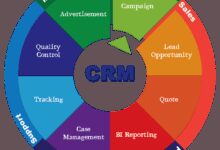B2B Business Secrets: 7 Powerful Strategies for Explosive Growth
Welcome to the world of B2B business, where relationships drive revenue and strategy shapes success. In this guide, we’ll uncover the powerful secrets behind thriving B2B companies—and how you can leverage them for explosive growth.
What Exactly Is a B2B Business?

The term B2B business—short for business-to-business—refers to companies that sell products or services to other businesses rather than to individual consumers. Unlike B2C (business-to-consumer), B2B transactions are typically larger, more complex, and involve longer sales cycles. These businesses operate across industries such as manufacturing, software, logistics, and professional services.
Core Characteristics of B2B Business Models
B2B business models are built on efficiency, scalability, and long-term value. They often involve bulk orders, customized solutions, and contractual agreements. Key characteristics include:
- Longer sales cycles: Decision-making involves multiple stakeholders and approval layers.
- Higher transaction values: Orders are typically larger due to volume or customization.
- Relationship-driven sales: Trust and reliability are paramount in B2B relationships.
- Need-based purchasing: Buyers focus on ROI, efficiency, and operational impact.
Common Examples of B2B Businesses
Some of the most recognizable B2B companies include:
- Salesforce: Provides CRM software to enterprises for managing customer relationships.
- HubSpot: Offers marketing, sales, and service platforms for businesses.
- Intel: Supplies microprocessors to computer manufacturers like Dell and HP.
- Siemens: Delivers industrial automation and energy solutions to factories and utilities.
These companies don’t sell directly to end-users but enable other businesses to function more effectively. For more real-world examples, check out Investopedia’s breakdown of B2B models.
Why B2B Business Is More Profitable Than You Think
While B2C often grabs headlines with viral marketing and flashy campaigns, the real profit engine lies in the B2B sector. According to Statista, global B2B e-commerce is projected to reach $20.9 trillion by 2027—nearly four times the size of B2C e-commerce. This massive scale is driven by high-value contracts, recurring revenue models, and deep customer integration.
High Customer Lifetime Value (CLV)
One of the biggest advantages of a B2B business is the potential for high customer lifetime value. Once a business integrates your product—like enterprise software or supply chain services—it becomes costly and risky to switch. This creates long-term contracts and recurring revenue streams.
For example, a company using Microsoft 365 across its departments is unlikely to migrate to another platform due to integration depth, training investment, and data migration complexity.
Scalability Through Enterprise Deals
A single enterprise deal can transform a B2B company’s trajectory. Selling a $500,000 software license to a Fortune 500 company can fund years of R&D or expansion. Unlike B2C, where growth requires millions of small transactions, B2B allows rapid scaling through a few high-impact clients.
“In B2B, one deal can change everything. It’s not about volume—it’s about value.” — Marc Benioff, CEO of Salesforce
The 7 Key Strategies for B2B Business Success
Winning in the B2B space isn’t about luck—it’s about strategy. Here are seven proven approaches that top-performing B2B companies use to dominate their markets.
1. Build Deep Customer Relationships
Unlike B2C, where transactions are often one-off, B2B thrives on long-term partnerships. Companies that invest in relationship-building see higher retention, upsell rates, and referrals.
- Assign dedicated account managers to key clients.
- Conduct regular business reviews to align goals.
- Offer personalized onboarding and training.
For example, Oracle maintains deep client relationships through its customer success programs, ensuring clients maximize ROI from their software investments.
2. Focus on Solving Real Business Problems
B2B buyers aren’t swayed by flashy ads—they care about solving operational challenges. Your messaging should focus on pain points like cost reduction, efficiency gains, or risk mitigation.
b2b business – B2b business menjadi aspek penting yang dibahas di sini.
- Map your product’s features to specific business outcomes.
- Use case studies to show measurable results (e.g., “Reduced downtime by 40%”).
- Speak the language of ROI, not just features.
A great example is Siemens, which markets its industrial IoT solutions by highlighting energy savings and predictive maintenance benefits.
3. Leverage Content Marketing Strategically
In B2B, buyers conduct extensive research before making decisions. High-quality content positions your brand as a thought leader and guides prospects through the funnel.
- Create whitepapers, webinars, and case studies.
- Optimize for long-tail keywords like “best CRM for mid-sized manufacturing firms”.
- Use LinkedIn and industry forums to distribute content.
HubSpot’s entire growth was fueled by inbound content marketing—offering free tools, blogs, and certifications that attracted millions of business users.
4. Master the Art of the Sales Funnel
The B2B sales funnel is longer and more complex than B2C. It typically includes awareness, consideration, decision, and retention stages. Each requires tailored messaging and touchpoints.
- Top of funnel: Educational content (blogs, infographics).
- Middle of funnel: Comparison guides, product demos.
- Bottom of funnel: Free trials, consultations, proposals.
Tools like Zoho CRM help track leads across these stages, ensuring no opportunity slips through.
5. Invest in Customer Success, Not Just Sales
In a B2B business, the sale is just the beginning. Customer success teams ensure clients achieve their goals, reducing churn and increasing expansion revenue.
- Onboard clients with structured training programs.
- Monitor usage and proactively address issues.
- Identify upsell opportunities based on client growth.
Companies like Adobe have built entire departments focused on customer success, leading to high retention in their Creative Cloud subscriptions.
6. Use Data to Drive Decisions
B2B companies generate vast amounts of data—from sales cycles to customer behavior. Leveraging analytics helps optimize pricing, marketing, and product development.
- Track metrics like CAC (Customer Acquisition Cost) and LTV (Lifetime Value).
- Use A/B testing for email campaigns and landing pages.
- Implement predictive analytics for churn risk.
For instance, IBM uses AI-driven analytics to forecast demand and personalize client engagements.
7. Build a Strong Brand in Your Niche
Even in B2B, branding matters. A strong brand builds trust, justifies premium pricing, and attracts top talent.
- Develop a clear value proposition.
- Consistently communicate your mission and expertise.
- Engage in industry events and sponsorships.
Take Cisco, for example—its brand is synonymous with networking and security, giving it a competitive edge in enterprise sales.
How Technology Is Reshaping the B2B Business Landscape
Technology is no longer just a tool in B2B—it’s a transformational force. From AI to cloud computing, digital innovation is redefining how B2B companies operate, sell, and serve.
AI and Automation in B2B Sales
Artificial intelligence is streamlining B2B sales by automating lead scoring, email personalization, and follow-ups. Platforms like Salesforce Einstein use AI to predict which leads are most likely to convert, saving time and increasing efficiency.
b2b business – B2b business menjadi aspek penting yang dibahas di sini.
- Chatbots handle initial inquiries 24/7.
- AI analyzes customer behavior to recommend next steps.
- Automated workflows reduce manual data entry.
The Rise of B2B E-Commerce Platforms
Gone are the days of paper catalogs and phone orders. B2B e-commerce is booming, with platforms like Shopify B2B and commercetools offering self-service portals, bulk pricing, and automated reordering.
According to a report by McKinsey, B2B buyers now expect the same seamless experience they get in B2C—fast checkout, real-time inventory, and mobile access.
Cloud-Based Solutions and SaaS Dominance
SaaS (Software as a Service) has become the backbone of modern B2B business. Companies prefer subscription models over one-time purchases because they offer flexibility, continuous updates, and lower upfront costs.
- Examples include Slack for team communication, Zoom for conferencing, and Asana for project management.
- SaaS reduces IT overhead and enables remote collaboration.
- Recurring revenue models improve financial predictability.
The global SaaS market is expected to exceed $1 trillion by 2030, according to Grand View Research.
Common Challenges in B2B Business (And How to Overcome Them)
Despite its advantages, running a B2B business comes with unique challenges. Understanding these hurdles—and how to navigate them—is critical for long-term success.
Long and Complex Sales Cycles
B2B sales often involve multiple decision-makers, legal reviews, and budget approvals. This can stretch the sales cycle from weeks to months—or even years.
- Solution: Map the buyer’s journey and create content for each stage.
- Use CRM tools to track interactions and stay top-of-mind.
- Offer pilot programs or proof-of-concept trials to accelerate decisions.
High Customer Acquisition Costs (CAC)
Acquiring B2B customers can be expensive due to the need for sales teams, demos, and marketing campaigns. If not managed, high CAC can erode profitability.
- Solution: Focus on inbound marketing to reduce reliance on outbound sales.
- Improve conversion rates through better lead qualification.
- Maximize customer lifetime value to offset acquisition costs.
Customer Retention and Churn Management
Even in B2B, churn is a real threat. A client may switch providers due to poor service, pricing changes, or better alternatives.
- Solution: Implement a customer success program.
- Conduct regular satisfaction surveys.
- Offer loyalty incentives or tiered pricing.
According to Bain & Company, increasing customer retention rates by 5% can increase profits by 25% to 95%.
The Role of Digital Marketing in B2B Business Growth
Traditional sales tactics are no longer enough. In today’s digital-first world, B2B companies must leverage online marketing to reach, engage, and convert prospects.
Search Engine Optimization (SEO) for B2B
SEO is crucial for B2B because buyers start their journey with search. Optimizing your website for industry-specific keywords helps you appear in front of decision-makers.
- Target long-tail keywords like “cloud-based inventory management for distributors”.
- Create detailed product pages with technical specifications.
- Build backlinks from industry publications and partner sites.
Tools like Ahrefs and Moz help identify high-opportunity keywords and track rankings.
LinkedIn as a B2B Marketing Powerhouse
LinkedIn is the #1 platform for B2B marketing. With over 900 million users, including executives, managers, and procurement officers, it’s the ideal place to build authority and generate leads.
b2b business – B2b business menjadi aspek penting yang dibahas di sini.
- Publish thought leadership articles.
- Run targeted Sponsored Content campaigns.
- Engage in industry groups and discussions.
Companies like Accenture use LinkedIn to showcase client success stories and attract enterprise clients.
Email Marketing That Converts in B2B
Email remains one of the highest ROI channels in B2B marketing. But success depends on relevance, timing, and personalization.
- Segment your list by industry, company size, or job title.
- Use automation to send nurture sequences.
- Include clear CTAs like “Schedule a Demo” or “Download the Case Study”.
Platforms like Mailchimp and Constant Contact offer robust tools for B2B email campaigns.
Future Trends Shaping the B2B Business World
The B2B landscape is evolving rapidly. Staying ahead requires anticipating trends and adapting quickly. Here are the key forces that will shape the future of B2B business.
Hyper-Personalization Through AI
Buyers expect personalized experiences—even in B2B. AI enables companies to tailor content, pricing, and recommendations based on individual client behavior.
- Dynamic pricing based on client history.
- Personalized onboarding journeys.
- AI-driven product suggestions during sales calls.
For example, Oracle AI helps sales teams deliver hyper-relevant proposals in real time.
Sustainability as a Competitive Advantage
More B2B buyers are prioritizing sustainability. Companies with eco-friendly practices, carbon-neutral operations, or green supply chains gain a competitive edge.
- Highlight your ESG (Environmental, Social, Governance) initiatives.
- Offer sustainable product alternatives.
- Partner with green-certified vendors.
A Deloitte survey found that 75% of millennials consider sustainability when choosing business partners.
The Growth of Remote Selling and Virtual Demos
Post-pandemic, remote selling is here to stay. B2B companies now rely on virtual demos, video calls, and digital contract signing to close deals.
- Invest in high-quality video production tools.
- Use screen-sharing and interactive demos.
- Adopt e-signature platforms like DocuSign.
Zoom’s enterprise sales grew exponentially by enabling seamless virtual engagement—proving that digital selling isn’t just convenient, it’s effective.
How to Start a Successful B2B Business: A Step-by-Step Guide
Ready to launch your own B2B business? Follow this proven roadmap to build a scalable, profitable company.
Step 1: Identify a Market Need
Start by solving a real problem. Conduct market research, interview potential clients, and analyze competitors.
- Ask: What inefficiencies exist in current solutions?
- Look for underserved niches or emerging industries.
- Validate demand through surveys or pre-orders.
Step 2: Define Your Value Proposition
Your value proposition should clearly state how you solve a problem better than anyone else.
b2b business – B2b business menjadi aspek penting yang dibahas di sini.
- Focus on outcomes: “Reduce IT costs by 30%” vs. “Cloud hosting services”.
- Highlight differentiators: speed, security, support, or integration.
- Keep it concise and client-centric.
Step 3: Build a Minimum Viable Product (MVP)
Launch a basic version of your product to test the market. Gather feedback and iterate quickly.
- Focus on core features that deliver value.
- Partner with early adopters for pilot programs.
- Use agile development to improve rapidly.
Step 4: Develop a Go-to-Market Strategy
How will you reach your customers? Choose channels that align with your audience.
- B2B marketplaces (e.g., Amazon Business, Alibaba).
- Content marketing and SEO.
- Partnerships with complementary businesses.
Step 5: Scale with Data and Automation
Once you gain traction, focus on scaling efficiently.
- Automate sales, marketing, and support processes.
- Invest in CRM and analytics tools.
- Expand into new markets or verticals.
What is the difference between B2B and B2C?
B2B (business-to-business) involves selling products or services to other businesses, often with longer sales cycles and higher transaction values. B2C (business-to-consumer) targets individual customers with shorter decision-making processes and emotional purchasing drivers.
How long does a typical B2B sales cycle last?
A typical B2B sales cycle can range from 1 to 12 months, depending on the industry, product complexity, and decision-making structure. Enterprise deals often take longer due to multiple stakeholders and approval layers.
What are the best marketing channels for B2B businesses?
The most effective B2B marketing channels include LinkedIn, SEO, email marketing, content marketing (whitepapers, webinars), and industry events. Digital channels offer the highest ROI for lead generation and brand building.
Can a small business succeed in the B2B space?
Absolutely. Many small B2B businesses thrive by focusing on niche markets, offering specialized services, or providing superior customer support. With the right strategy, even a small team can land enterprise clients.
What is the biggest challenge in B2B business?
One of the biggest challenges is the long sales cycle combined with high customer acquisition costs. Overcoming this requires a strong value proposition, efficient sales processes, and a focus on customer retention.
b2b business – B2b business menjadi aspek penting yang dibahas di sini.
Mastering the B2B business landscape requires more than just a great product—it demands strategic thinking, relationship-building, and adaptability. From understanding the core mechanics of B2B models to leveraging digital marketing and AI, the path to success is both challenging and rewarding. By focusing on solving real business problems, delivering exceptional customer value, and staying ahead of industry trends, any company can achieve explosive growth in the B2B world. The future belongs to those who build not just products, but partnerships.
Further Reading:









